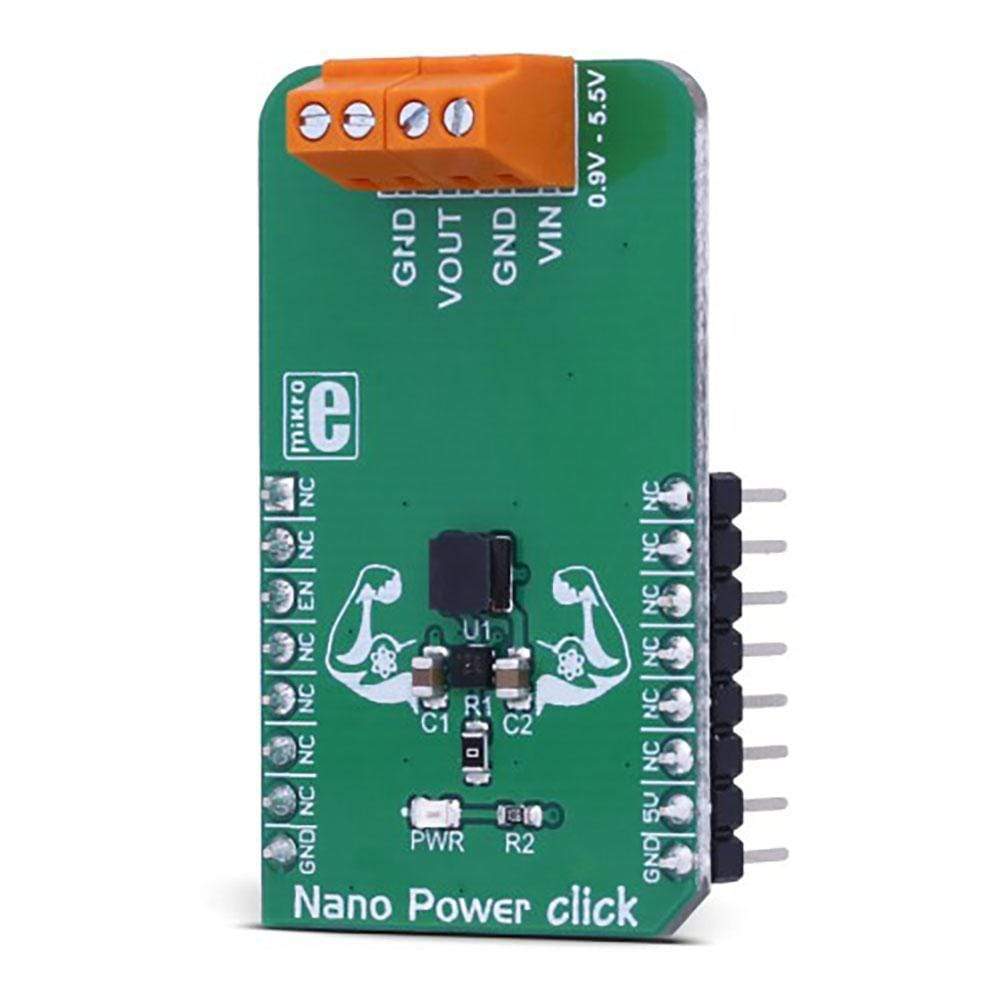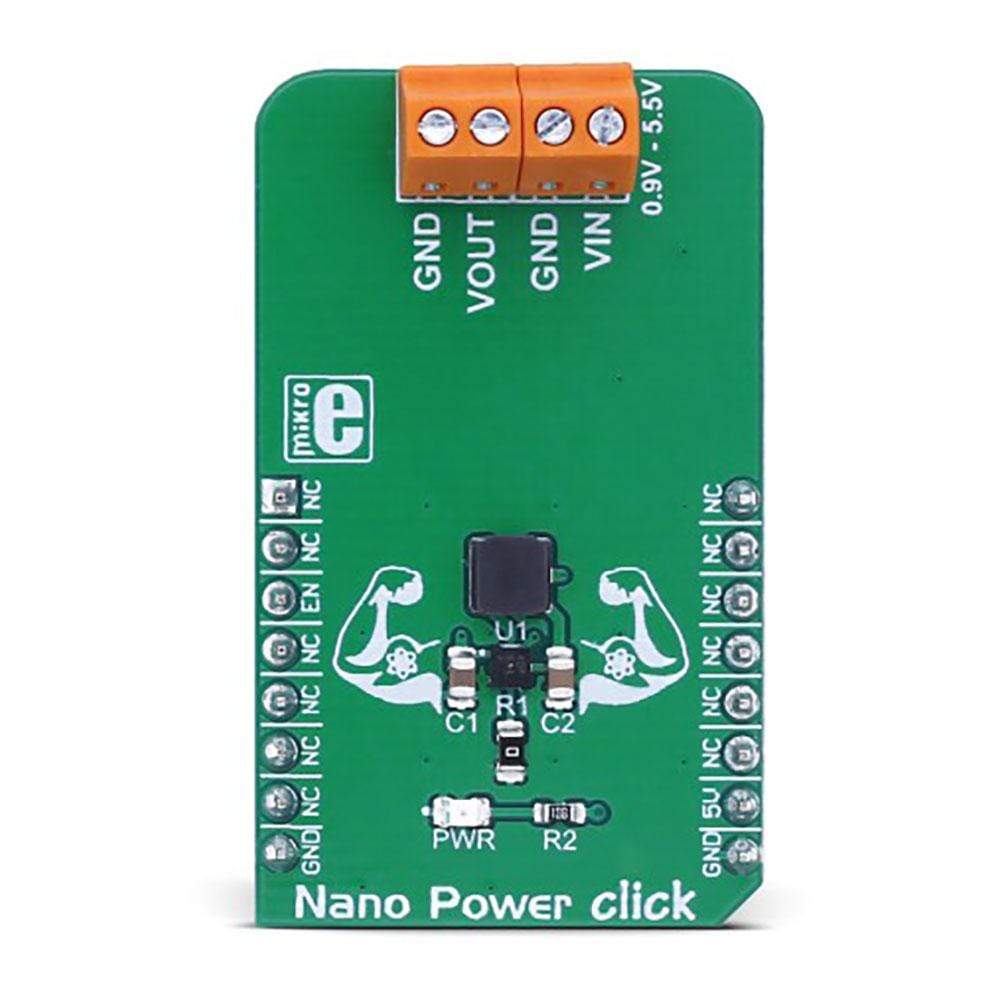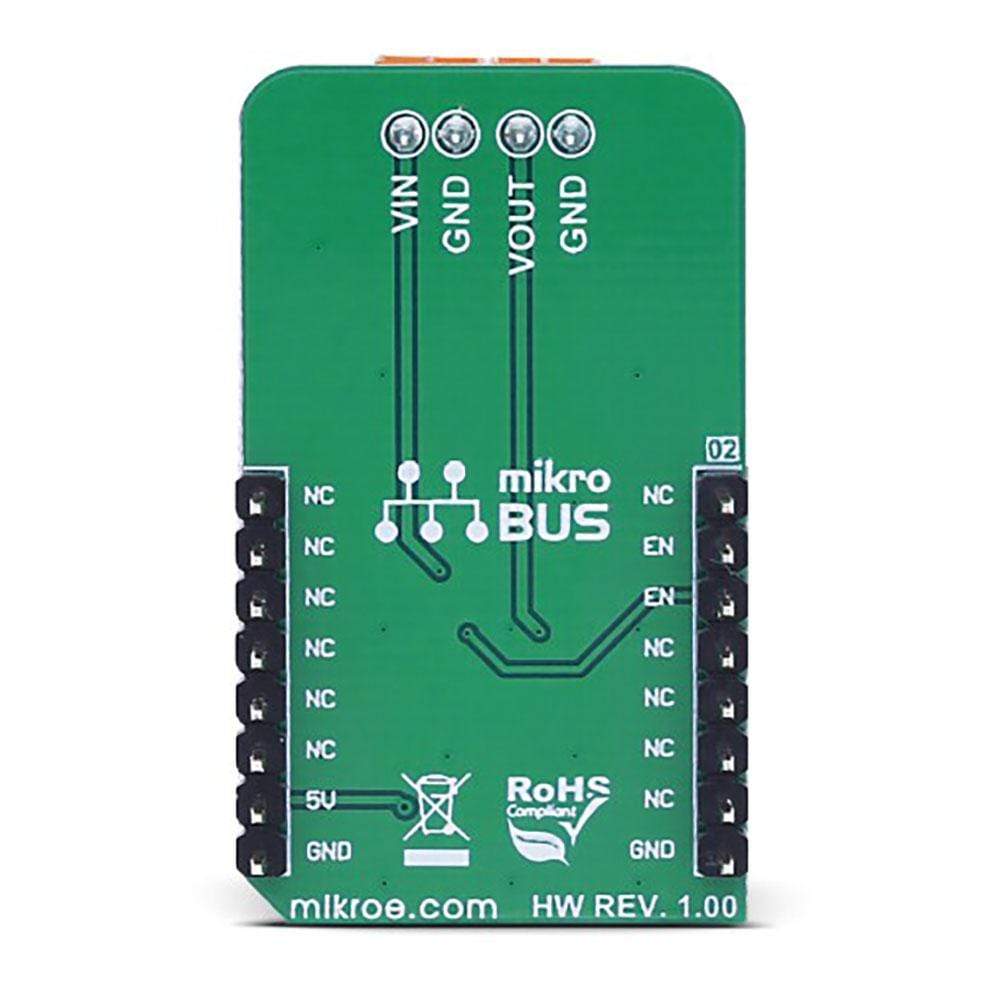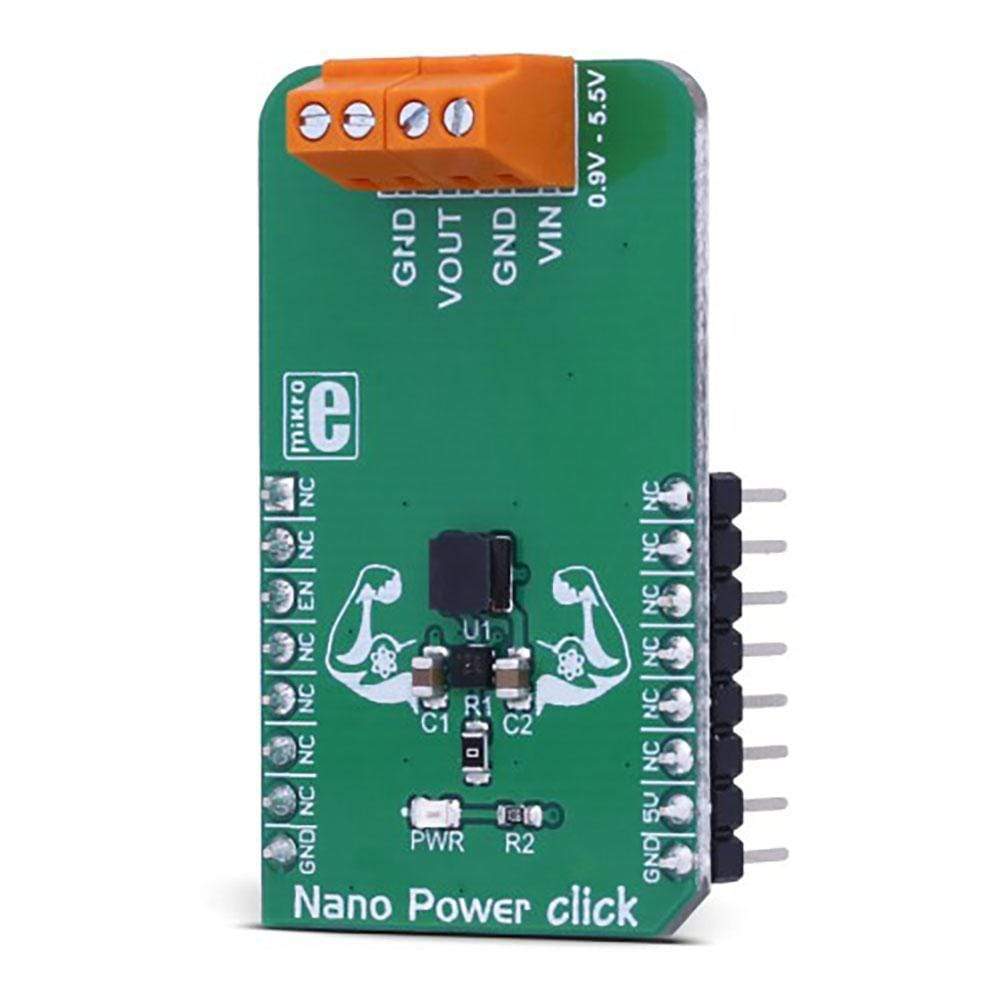
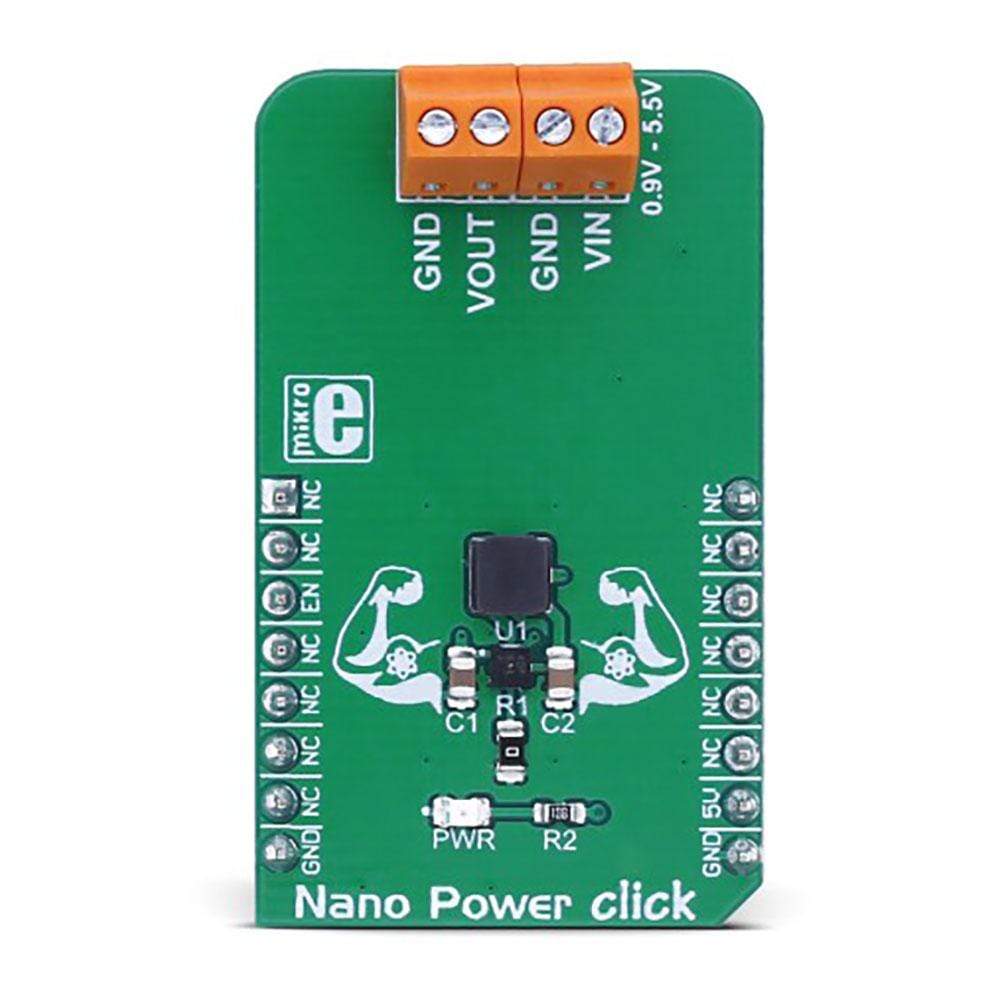
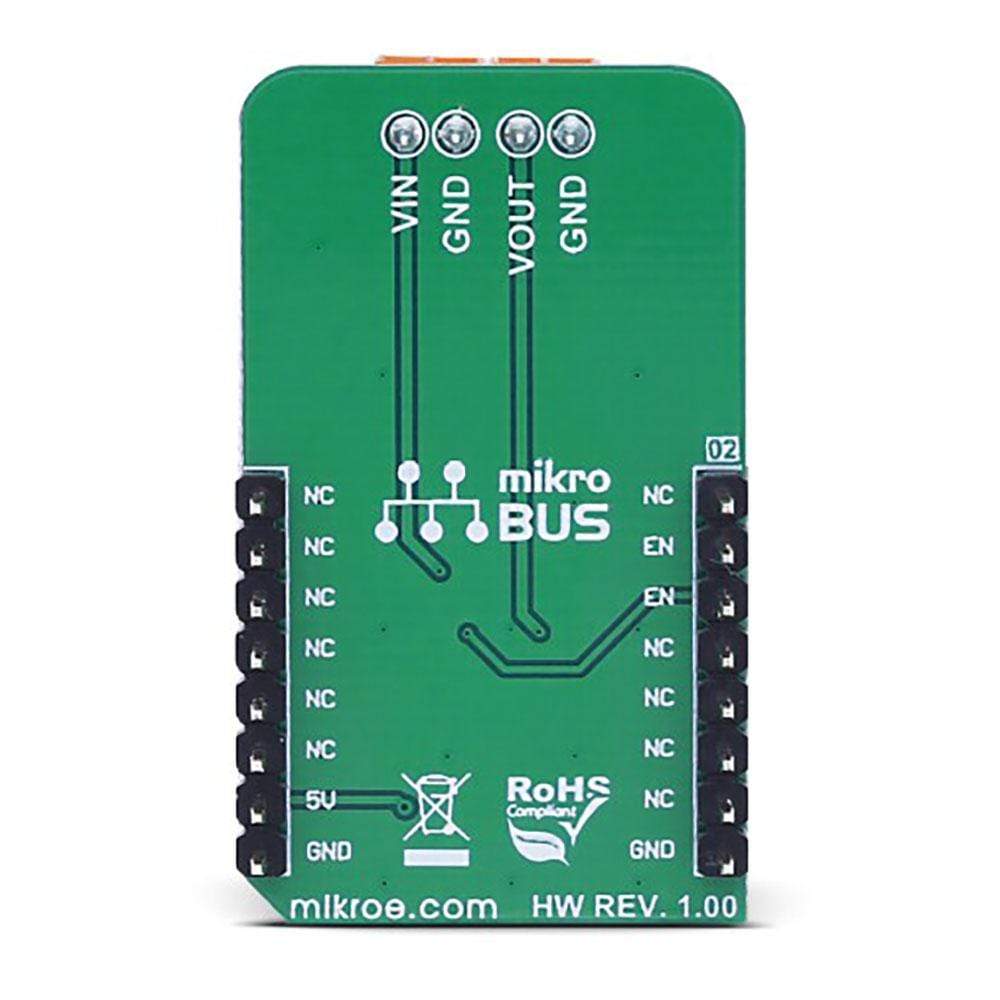
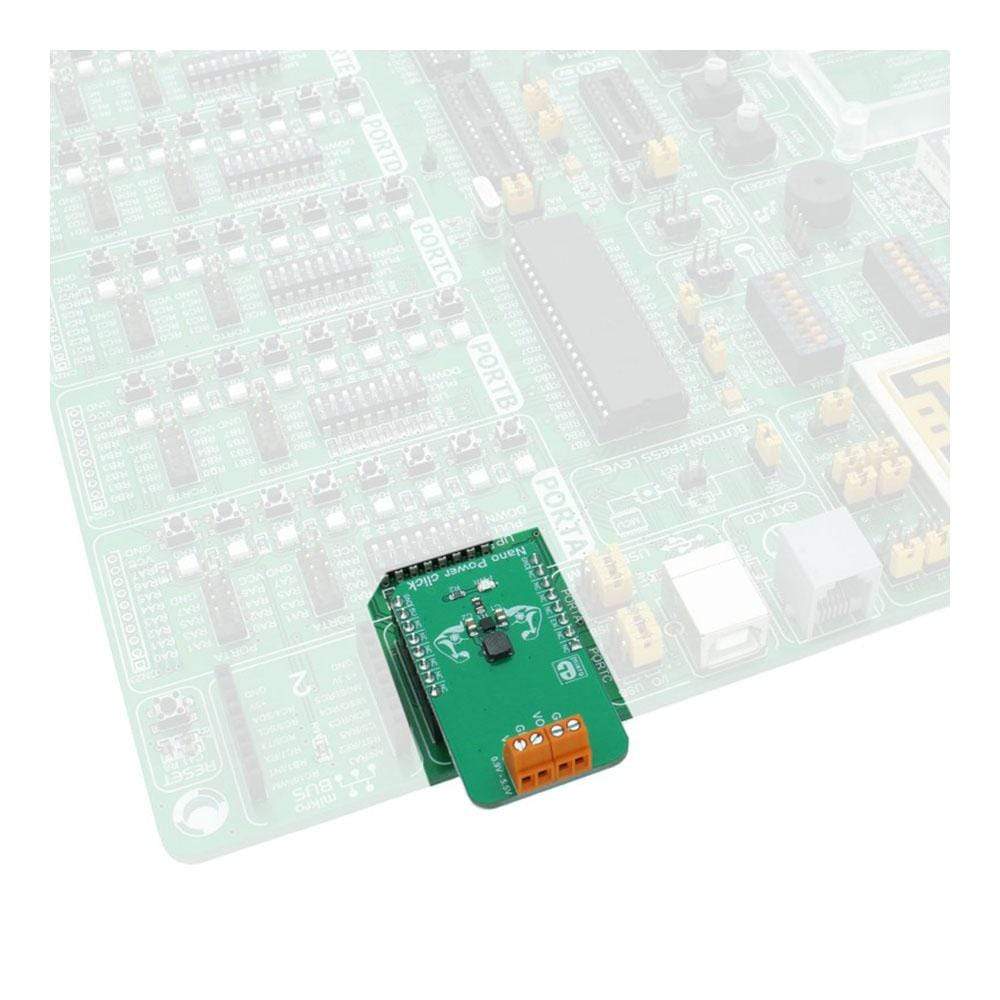
Overview
The Nano Power Click Board™ is a boost (step-up) DC-DC converter Click Board™ with extremely high efficiency and very low input voltage, aimed at the low power IoT market and battery-powered sensors and other devices. The input voltage can be very low: the conversion will start for voltages down to 0.95V, providing 5V to the connected load. Once started, the input voltage can drop as low as 0.4V, depending on the connected load.
The onboard DC-DC converter IC uses the pulse frequency modulation control scheme (PFM), which allows high efficiency and low power consumption for a wide range of output currents.
Downloads
Das Nano Power Click Board ™ ist ein Boost-DC-DC-Wandler Click Board™ mit extrem hoher Effizienz und sehr niedriger Eingangsspannung, der auf den IoT-Markt mit geringem Stromverbrauch und batteriebetriebene Sensoren und andere Geräte ausgerichtet ist. Die Eingangsspannung kann sehr niedrig sein: Die Umwandlung beginnt bei Spannungen bis zu 0,95 V und liefert 5 V an die angeschlossene Last. Nach dem Start kann die Eingangsspannung je nach angeschlossener Last auf bis zu 0,4 V abfallen.
Der integrierte DC-DC-Wandler-IC verwendet das Pulsfrequenzmodulations-Steuerungsschema (PFM), das eine hohe Effizienz und einen niedrigen Stromverbrauch für einen weiten Bereich von Ausgangsströmen ermöglicht.
| General Information | |
|---|---|
Part Number (SKU) |
MIKROE-3035
|
Manufacturer |
|
| Physical and Mechanical | |
Weight |
0.018 kg
|
| Other | |
Country of Origin |
|
HS Code Customs Tariff code
|
|
EAN |
8606018713042
|
Warranty |
|
Frequently Asked Questions
Have a Question?
Be the first to ask a question about this.

